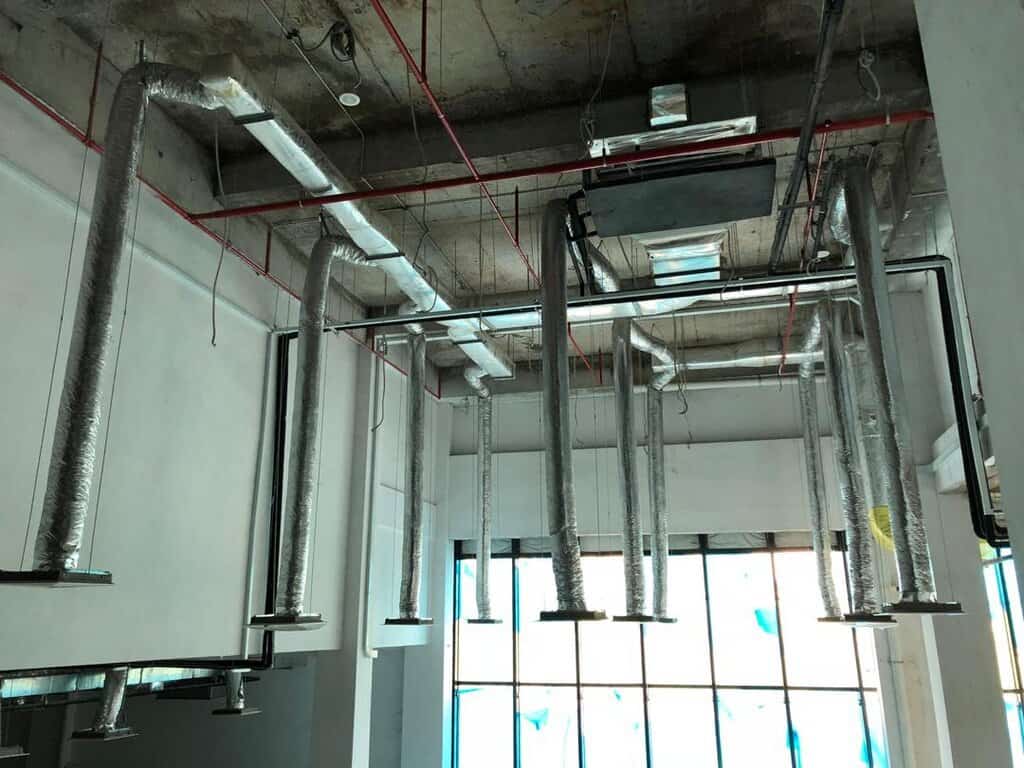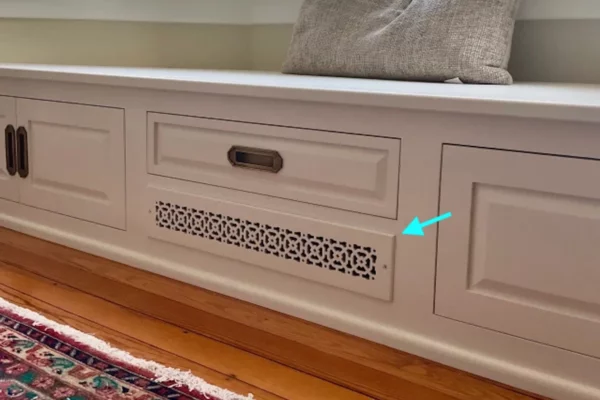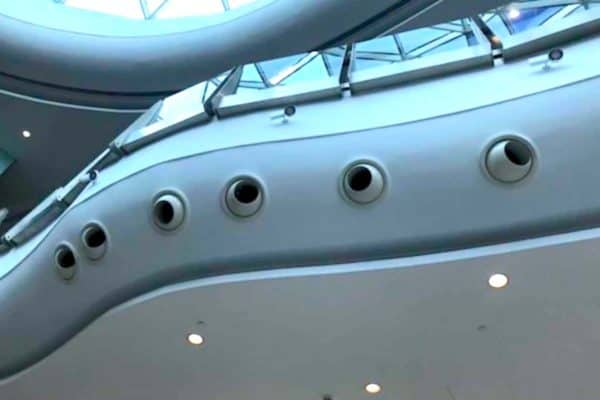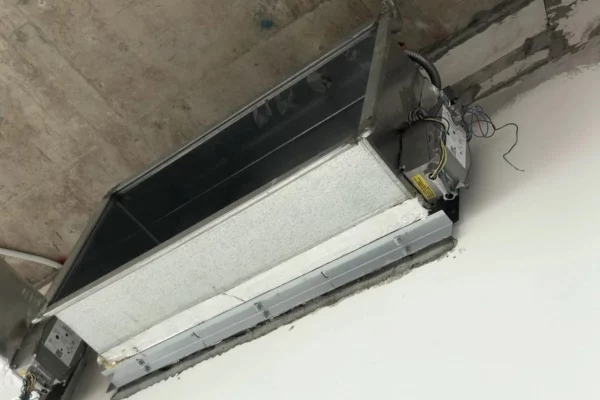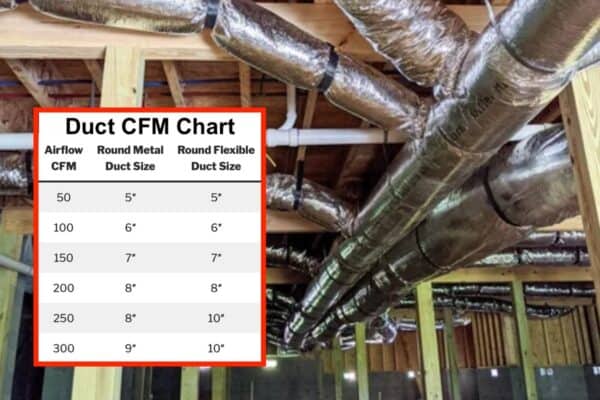Can Round Flexible Duct Be Used for HVAC Return Air?
Some people wanted to know if they can use a flex duct for return air as they concern about the airflow issues. Hence, I did some research.
Flex duct is widely used for return air in commercial air conditioning systems. Flex duct is able to withstand a certain negative pressure of return air. When installed properly, a flex duct is a reliable and convenient ductwork solution.
Flex duct often gets a bad rep because of airflow issues. However, most of the problem comes from wrong flex duct size and improper installation. Following the expert’s recommendation and you’re good to go.
How to Use Flex Duct Properly for Return Air?
Most of the problem with flex duct is due to improper selection and installation. Following are the recommendation from the expert:
Flex duct length shall not exceed 2.5 meters
Industry experts and skilled workers generally practice not extending the flex duct to more than 2.5 meters. The long flex duct is prone to sagging which reduces the airflow.

The inside of the flex duct is wrinkly. Thus, it is very easy to collect dust and slow down the airflow. The longer the flex duct, the greater is the airflow resistance. Therefore, avoid exceeding the recommended length unless you are confident that you can make the flex duct not sagging.
Support for flex duct shall have a width not less than 25 mm
A common mistake in flex duct installation is the support. SMACNA recommended that the support for the flex duct shall be a flat saddle with the width of the saddle not less than 25 mm.
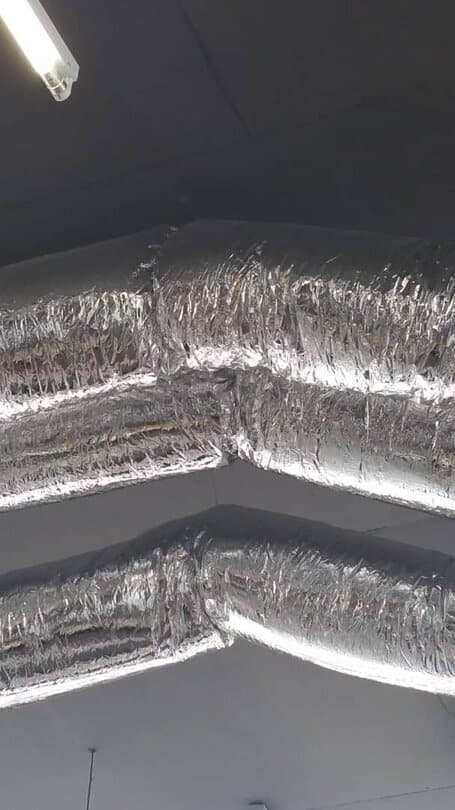

A wide saddle spreads out the pressure point to avoid squeezing the flex duct and reduces airflow. In addition, the flat saddle shall cover one-half of the outside of the flex duct and fit neatly around the lower half of the flex duct.
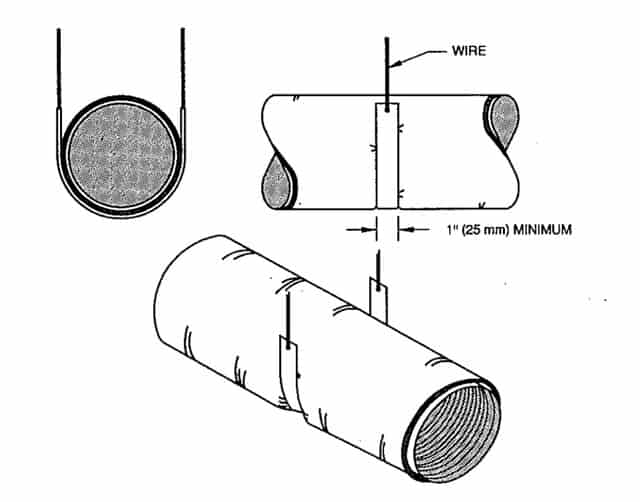
Some people use only one wire instead of two which I think is fine as long as the wire is strong enough to hold the weight of the flex duct and the flex duct is not squeezed.
Support interval for flex duct shall be within 1.5 meters
SMACNA recommended that the distance between two supports shall not be more than 1.5 meters. Industry practice support interval at 1.2 meters.
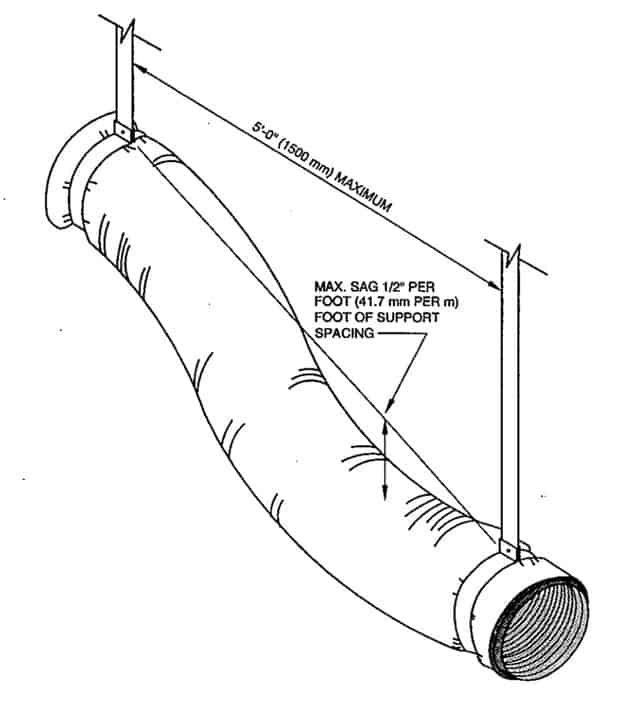
SMACNA also allows a maximum sag of 41.7 mm per meter of support spacing. However, I suggest not allowing any visible sags to reduce the rate of dust collection and thus, reduces airflow over time.
Flex duct must be sized as per the required airflow
Selecting the correct flex duct size is crucial for return air. The pressure drop of the flex duct must be within the acceptable limit of your air conditioning system. Thus, do not undersize the flex duct.
Sizing a flex duct is actually very easy. I’ve done it on my own using McQuay duct sizer. Below the tutorial video is a great step-by-step guide on how to use the duct sizer. Download McQuay duct sizer.
Collar to which the flex duct is attached shall be at least 50 mm in length
Return air grille shall have a plenum box with a collar for flex duct to attach. The collar shall have at least 50 mm of length for the attachment of the flex duct. The attachment is by means of duct glue and aluminum tape.
This guideline from SMACNA is to ensure the collar and the flex duct are attached firmly. Flex duct experiences vibration during operation, especially with strong airflow. Thus, the attachment must be able to hold up strongly for years to come.
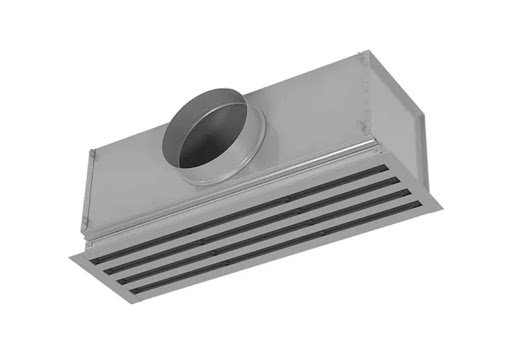
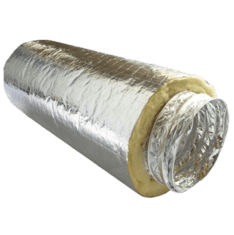
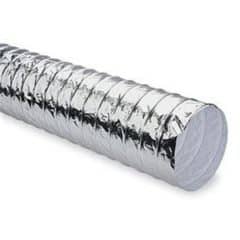
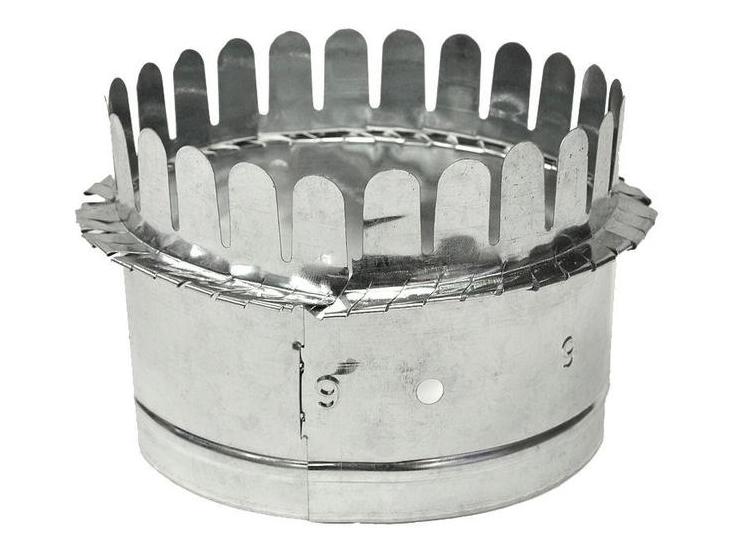

Accessories such as metal clamp can be used to attach flexible duct to the collar. However, it is not suitable for insulated flex duct and air conditioning return air uses insulated flex duct.
Things to Watch Out When Installing Flex Duct for Return Air
Although flex duct is convenient, fiberglass insulation is harmful to the human respiratory system. Wear mask and gloves when handling fiberglass. Allergy reactions may occur if you touch the fiberglass and a sore throat may happen if you inhaled it.
When installing a flex duct, try not to place it next to sharp edges such as ceiling support brackets to prevent the flex duct from tearing off when in contact with sharp edges. If the insulated flex duct is torn, fiberglass is exposed.
Tips for a Good Return Air
A good air conditioning system shall have the return air place on one side of the room while the supply air is on the other side of the room. This allows the supply of air to circulate every corner of the room.
If you have an air conditioner that is supplying air to multiple rooms, the return air must also take back air from each room to ensure there is air circulation in each room. In addition, the absents of return air in each room can lead to an imbalance in room temperature.
Lastly, consider my Mini Split (eBook) if you want to know how can you use Mini Split in your house. If you still have doubt or not feeling confident enough, feel free to consult me.
Consultation Service
Ask me for HVAC advice such as brand selection, best model, benefits, features, placement, duct size, grille size, how to design, design check, verification and other HVAC related queries.
If you have anything to add (or ask) about this topic, leave a comment down below!


